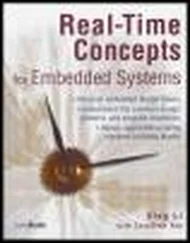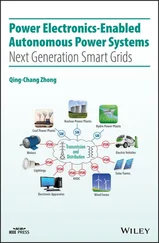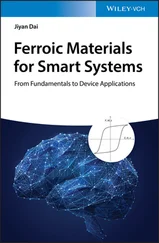Mathematical Programming for Power Systems Operation
Mathematical Programming for Power Systems Operation
From Theory to Applications in Python
Alejandro GarcésTechnological University of PereiraPereira, Colombia

This edition first published 2022
© 2022 by The Institute of Electrical and Electronics Engineers, Inc. All rights reserved.
Published by John Wiley & Sons, Inc., Hoboken, New Jersey. Published simultaneously in Canada.
No part of this publication may be reproduced, stored in a retrieval system, or transmitted in any form or by any means, electronic, mechanical, photocopying, recording, scanning, or otherwise, except as permitted under Section 107 or 108 of the 1976 United States Copyright Act, without either the prior written permission of the Publisher, or authorization through payment of the appropriate per-copy fee to the Copyright Clearance Center, Inc., 222 Rosewood Drive, Danvers, MA 01923, (978) 750-8400, fax (978) 750-4470, or on the web at www.copyright.com. Requests to the Publisher for permission should be addressed to the Permissions Department, John Wiley & Sons, Inc., 111 River Street, Hoboken, NJ 07030, (201) 748-6011, fax (201) 748-6008, or online at http://www.wiley.com/go/permission.
Limit of Liability/Disclaimer of Warranty: While the publisher and author have used their best efforts in preparing this book, they make no representations or warranties with respect to the accuracy or completeness of the contents of this book and specifically disclaim any implied warranties of merchantability or fitness for a particular purpose. No warranty may be created or extended by sales representatives or written sales materials. The advice and strategies contained herein may not be suitable for your situation. You should consult with a professional where appropriate. Neither the publisher nor author shall be liable for any loss of profit or any other commercial damages, including but not limited to special, incidental, consequential, or other damages.
For general information on our other products and services or for technical support, please contact our Customer Care Department within the United States at (800) 762-2974, outside the United States at (317) 572-3993 or fax (317) 572-4002.
Wiley also publishes its books in a variety of electronic formats. Some content that appears in print may not be available in electronic formats. For more information about Wiley products, visit our web site at www.wiley.com.
Library of Congress Cataloging-in-Publication Data
A catalogue record for this book is available from the Library of Congress
Paperback ISBN: 9781119747260; ePub ISBN: 9781119747284;
ePDF ISBN: 9781119747277; oBook ISBN: 9781119747291
Cover image: © Redlio Designs/Getty Images
Cover design by Wiley
Set in 9.5/12.5pt STIXTwoText by Integra Software Services Pvt. Ltd, Pondicherry, India
1 Cover
2 Title page Mathematical Programming for Power Systems Operation Mathematical Programming for Power Systems Operation From Theory to Applications in Python Alejandro GarcésTechnological University of PereiraPereira, Colombia
3 Copyright
4 Table of Contents
5 Acknowledgment
6 Introduction
7 1 Power systems operation1.1 Mathematical programming for power systems operation1.2 Continuous models1.2.1 Economic and environmental dispatch1.2.2 Hydrothermal dispatch1.2.3 Effect of the grid constraints1.2.4 Optimal power flow1.2.5 Hosting capacity1.2.6 Demand-side management1.2.7 Energy storage management1.2.8 State estimation and grid identification1.3 Binary problems in power systems operation1.3.1 Unit commitment1.3.2 Optimal placement of distributed generation and capacitors1.3.3 Primary feeder reconfiguration and topology identification1.3.4 Phase balancing1.4 Real-time implementation1.5 Using Python
8 Part I Mathematical programming 2 A brief introduction to mathematical optimization2.1 About sets and functions2.2 Norms2.3 Global and local optimum2.4 Maximum and minimum values of continuous functions2.5 The gradient method2.6 Lagrange multipliers2.7 The Newton’s method2.8 Further readings2.9 Exercises 3 Convex optimization3.1 Convex sets3.2 Convex functions3.3 Convex optimization problems3.4 Global optimum and uniqueness of the solution3.5 Duality3.6 Further readings3.7 Exercises 4 Convex Programming in Python4.1 Python for convex optimization4.2 Linear programming4.3 Quadratic forms4.4 Semidefinite matrices4.5 Solving quadratic programming problems4.6 Complex variables4.7 What is inside the box?4.8 Mixed-integer programming problems4.9 Transforming MINLP into MILP4.10 Further readings4.11 Exercises 5 Conic optimization5.1 Convex cones5.2 Second-order cone optimization5.2.1 Duality in SOC problems5.3 Semidefinite programming5.3.1 Trace, determinant, and the Shur complement5.3.2 Cone of semidefinite matrices5.3.3 Duality in SDP5.4 Semidefinite approximations5.5 Polynomial optimization5.6 Further readings5.7 Exercises 6 Robust optimization6.1 Stochastic vs robust optimization6.1.1 Stochastic approach6.1.2 Robust approach6.2 Polyhedral uncertainty6.3 Linear problems with norm uncertainty6.4 Defining the uncertainty set6.5 Further readings6.6 Exercises
9 Part II Power systems operation 7 Economic dispatch of thermal units7.1 Economic dispatch7.2 Environmental dispatch7.3 Effect of the grid7.4 Loss equation7.5 Further readings7.6 Exercises 8 Unit commitment8.1 Problem definition8.2 Basic unit commitment model8.3 Additional constraints8.4 Effect of the grid8.5 Further readings8.6 Exercises 9 Hydrothermal scheduling9.1 Short-term hydrothermal coordination9.2 Basic hydrothermal coordination9.3 Non-linear models9.4 Hydraulic chains9.5 Pumped hydroelectric storage9.6 Further readings9.7 Exercises 10 Optimal power flow10.1 OPF in power distribution grids10.1.1 A brief review of power flow analysis10.2 Complex linearization10.2.1 Sequential linearization10.2.2 Exponential models of the load10.3 Second-order cone approximation10.4 Semidefinite approximation10.5 Further readings10.6 Exercises 11 Active distribution networks11.1 Modern distribution networks11.2 Primary feeder reconfiguration11.3 Optimal placement of capacitors11.4 Optimal placement of distributed generation11.5 Hosting capacity of solar energy11.6 Harmonics and reactive power compensation11.7 Further readings11.8 Exercises 12 State estimation and grid identification12.1 Measurement units12.2 State estimation12.3 Topology identification12.4 Y busestimation12.5 Load model estimation12.6 Further readings12.7 Exercises 13 Demand-side management13.1 Shifting loads13.2 Phase balancing13.3 Energy storage management13.4 Further readings13.5 Exercises
10 A The nodal admittance matrix
11 B Complex linearization
12 C Some Python examplesC.1 Basic PythonC.2 NumPyC.3 MatplotLibC.4 Pandas
13 Bibliography
14 Index
15 End User License Agreement
1 IntroductionFigure 0.1 Stages of solving an optimization problem.
2 Chapter 1Figure 1.1 Types of optimization models.Figure 1.2 Schematic representation of the variables associated to a...Figure 1.3 Economic dispatch by areas considering network constraints with...Figure 1.4 Vehicle-to-grid concept with an aggregator that centralizes control actions...Figure 1.5 Example of a microgrid with a centralized...Figure 1.6 Set of possible configurations in a three-phase node.Figure 1.7 A possible architecture for implementing an optimization...
3 Chapter 2Figure 2.1 Representation of the sets related to a general optimization problem.Figure 2.2 Three ways to measure the vector...Figure 2.3 Comparison among unit balls defined by norm-2, norm-1, and norm-∞Figure 2.4 Example of local and global optima: a) function with two local minima...Figure 2.5 Example of a function with several optimal points.Figure 2.6 A small photovoltaic system with three solar panels.Figure 2.7 Convergence of the gradient method.Figure 2.8 Intersection of an affine space with a cylinder.
Читать дальше













